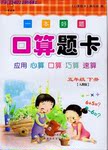题目内容
About five years ago, an American electrical engineer named Scott Brusaw and his wife Julie came up with the idea of putting solar panels on the ground rather than the roof. Then they began to develop the Solar Roadway specially for a new type of cars-eco-cars. The Solar Roadway is an intelligent road that provides clean renewable energy using power from the sun while providing safer driving conditions, along with power and data delivery. They predict that the Solar Roadway will pay for itself through the generation of electricity along with other forms of income and that the same amount of money that is being used to build and resurface current roads can be used to build the Solar Roadsays.
Each Solar Road Panel measures roughly 4 meters and contains a microprocessor(微处理器)that monitors and controls the panel, while communicating with neighboring panels and the vehicles traveling overhead. The inventors suggest that this provides a communication device every 4 meters on every road which could be used for example to warn drivers of cars which are moving across a centre line and various other speed control problems. The top of the Solar Road panels is made of super-strong glass that would offer vehicles the tractions(抓地力)they need.
According to the inventors, the Solar Roadway creates and carries clean renewable electricity and therefore electric vehicles can be recharged at any conveniently located rest stop, or at any business that has paved Solar Road Panels in their parking lots.
The inventors say their Solar Roadway has many functions and advantages from main roads to drivewasys, parking lots, bike paths, sidewalks and runways. The Federal Highway Administration has given Brusaw $100,000 to develop the invention and Brusaw hopes to build a smart-road parking lot in the coming spring.
1.In the inventors’ opinion, the Solar Roadway______.
A. is too expensive to build at present
B. costs no more money than current roads
C. can provide as many data as present computers
D. will bring them a large sum of money
2.The underlined word“they”in Paragraph 2 refers to______.
A. the panels B. the inventors C. the researchers D. the vehicles
3.The Solar Roadway includes all the following advantages EXCEPT_______.
A. providing safer driving conditions
B. helping drivers communicate with each other while driving
C. creating and carrying clean renewable electricity
D. warning drivers of various speed control problems
4.What can be the best title for the text?
A. Solar-powered smart road of the future
B. The great changes on the roadway
C. The influence the Solar Roadway has on people
D. The Solar Road-a much faster road
 一本好题口算题卡系列答案
一本好题口算题卡系列答案
